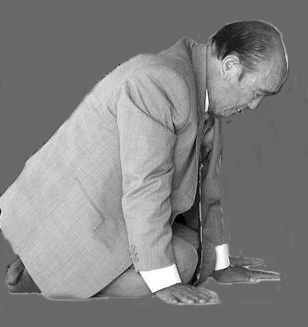Book Review: The Rod of Iron Kingdom by Hyung Jin Sean Moon
Cheon Seong Gyeong 2050
As you are doing your tong ban
breakthrough activities, you should
gain the support of 12 families. When
you go to a district, you should gain the
support of 12 local communities, and
when you go to a local community you
should integrate twelve home neigh-
borhoods. There are twelve stages. For
the most part, haven’t the cities, coun-
ties and boroughs harmonized with us?
There isn’t anyone, including the heads
of organizations, who doesn’t respect
Rev. Moon, right? All of you are also
respected, right? We have become influ-
ential, right? So, you are people of influ-
ence, but are you the central figure of
influence or not? We’re the only ones
who can prevail over the communists,
right? So we have become the central fig-
ures of influence. (204-245, 1990.7.11)
Cheon Seong Gyeong 1154
Who is Satan? To God he is the adul-
terer. Forgiving the adulterer would go
against the heavenly principle, so God
cannot forgive him. Therefore, even
though God can forgive the people of
the satanic world a hundred or a thou-
sand times, He absolutely cannot forgive
Satan. That is why the great judgment
will come. Who will be judged in the
great judgment? It is not human beings,
but Satan, who dwells like a master in
their souls, who will be judged. (22-282,
1969.5.4)
The Sorrowful Heart of Jesus as He Went to the Mountain
Rev. Sun Myung Moon
January 25, 1959
Christianity has had a deep connection with mountains throughout history. I will speak to you on the topic of “The Sorrowful Heart of Jesus as He Went to the Mountain.”
You must know well the scene of the Transfiguration from the text of the Bible. Please re-imagine the figure of Jesus as he went up to the Mount of Transfiguration. Going to the top of the mountain, Jesus represented the whole providence of history, his own contemporary age, and all the descendants of the future. I would like you to remember, however, that he climbed the mountain with a mournful, sad and lonesome heart, rather than a joyful one. We should know that this event did not affect only that moment. It was a time when a crucial decision was made that had implications for the age before Jesus, the age of Jesus, and the age after Jesus.
We know well that Jesus visited high mountains whenever he was faced with serious matters. Jesus, who received the three tests from Satan after fasting for forty days, had to discriminate clearly between front and rear, left and right, with worry and concern for Heaven, humankind and all things. For Jesus, who bore such a responsibility, that scene was an important and tragic one in which he had to distinguish between Heaven and Satan, heavenly affairs and satanic affairs. Jesus was led away by Satan to a mountain top for the test.
Mountains figuring in Jesus’ life were: the mountain Satan led him to climb in the wilderness, the Mount of Transfiguration, which he climbed in order to decide in front of Heaven the matter of carrying the cross, and the garden of Gethsemane near the slopes of the Mount of Olives, where he offered a decisive prayer to go over the deadly path of Golgotha. We should remember this.
We will have to consider how Jesus moved, how woeful his heart was, and with what countenance Jesus appeared as he went to the mountain. We will have to reflect deeply on the figure of Jesus as he went into the wilderness 2,000 years ago. Otherwise, we will not be able to understand his desperate heart as he walked the course of struggle against Satan.
Jesus defeated Satan in the three temptations in the wilderness and achieved the final victory on a mountain. We should realize that the steps of Jesus in going to the wilderness, after being rejected by the chosen John the Baptist and his followers and the Jewish nation, were walked with a heart of sorrow the like of which no one on the earth has ever experienced.
